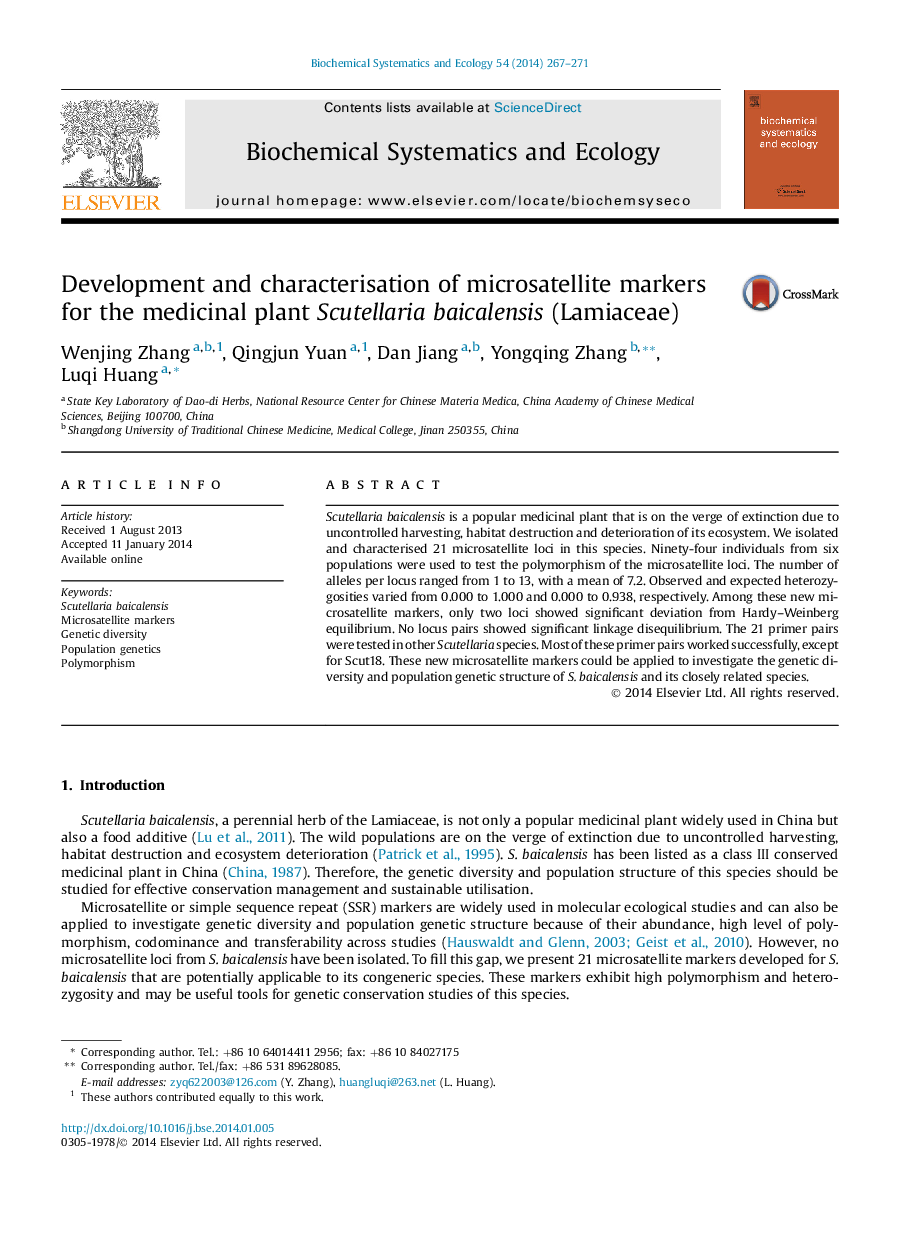| Article ID | Journal | Published Year | Pages | File Type |
|---|---|---|---|---|
| 7768987 | Biochemical Systematics and Ecology | 2014 | 5 Pages |
Abstract
Scutellaria baicalensis is a popular medicinal plant that is on the verge of extinction due to uncontrolled harvesting, habitat destruction and deterioration of its ecosystem. We isolated and characterised 21 microsatellite loci in this species. Ninety-four individuals from six populations were used to test the polymorphism of the microsatellite loci. The number of alleles per locus ranged from 1 to 13, with a mean of 7.2. Observed and expected heterozygosities varied from 0.000 to 1.000 and 0.000 to 0.938, respectively. Among these new microsatellite markers, only two loci showed significant deviation from Hardy-Weinberg equilibrium. No locus pairs showed significant linkage disequilibrium. The 21 primer pairs were tested in other Scutellaria species. Most of these primer pairs worked successfully, except for Scut18. These new microsatellite markers could be applied to investigate the genetic diversity and population genetic structure of S. baicalensis and its closely related species.
Keywords
Related Topics
Physical Sciences and Engineering
Chemistry
Organic Chemistry
Authors
Wenjing Zhang, Qingjun Yuan, Dan Jiang, Yongqing Zhang, Luqi Huang,
